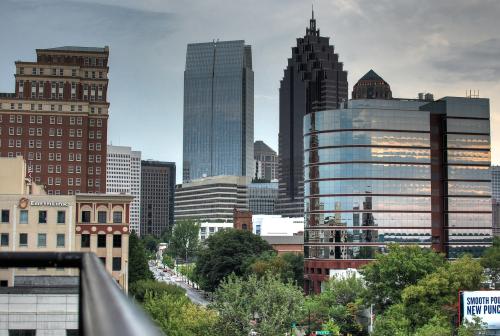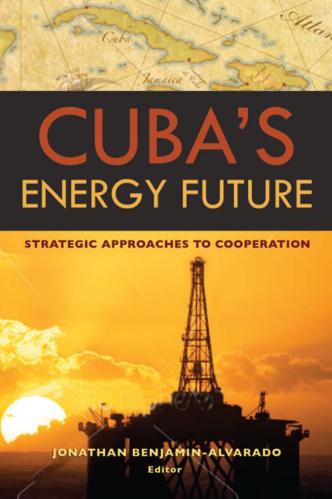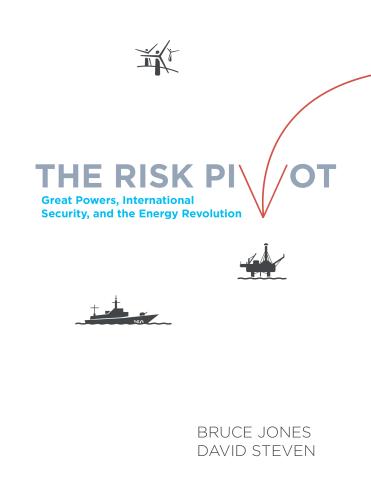The following is an excerpt from an address by Bruce Katz to the Global Metro Summit 2010: Delivering the Next Economy in Chicago on December 8, 2010. To watch the full presentation, visit the Global Summit event page.
Low carbon a hallmark of the next U.S. economy. Let’s imagine a world where America is the vanguard of the clean, green revolution. Everything … is about to change. The energy we use will migrate from an almost exclusive focus on carbon based fuels to a more sustainable mix. The infrastructure we build will shift from outmoded transport and energy to systems that are smarter, faster, and technologically enabled. The products we buy will move from high carbon gas guzzlers to an eclectic basket of green, sustainable goods.
We must shape a different kind of U.S. economy, a “next economy” that is driven by exports, powered by low carbon, fueled by innovation, and rich with opportunity. This is a vision where we export more and waste less, innovate in what matters, produce and deploy more of what we invent, and ensure that the economy actually works for working families.
The next economy will largely be metropolitan, in form and function. Our major metros already generate more than three-quarters of our gross domestic product. Despite nostalgia over small town America, it is metropolitan America that drives our national economy and determines our national prosperity.
Low carbon is the second hallmark of the next U.S. economy. Let’s imagine a world where America is the vanguard of the clean, green revolution …or, as Dr. Ackermann has suggested, “the second industrial revolution.”
Everything … is about to change. The energy we use will migrate from an almost exclusive focus on carbon based fuels to a more sustainable mix. The infrastructure we build will shift from outmoded transport and energy to systems that are smarter, faster, and technologically enabled. The products we buy will move from high carbon gas guzzlers to an eclectic basket of green, sustainable goods. And the homes we live in and the office and retail buildings we frequent will be more sustainable in design, more efficient in their use of water and energy, and better arrayed so that people can spend less, walk more and live a higher quality of life.
Our competitors—China, Germany, Brazil—have embraced the green economy, creating markets, growing jobs and stimulating investment. China is hell bent on being the world’s green producer, out-investing us on renewable energy, high speed rail, and a host of other sustainable products. Can the U.S. even play in the low carbon revolution?
Our research shows that we already have a strong base of more than 2 million green jobs, in sectors ranging from renewable energy to pollution reduction. No other nation can match us in domestic demand, advanced research, venture capital, entrepreneurial dynamism.
It is time for us to fully engage the shift to low carbon … and leapfrog other nations on a market transformation as profound as the information revolution. A low carbon economy could be an engine for job creation, delivered by millions of new workers across a range of professions and occupations.
The next economy will largely be metropolitan, in form and function. This is true abroad, as I mentioned before, but it is also true here in the United States. This is the real heart of the American economy—100 metropolitan areas that after decades of growth take up only 12 percent of our land mass, but harbor two-thirds of our population and generate 75 percent … 75 percent … of our gross domestic product.
These metropolitan areas form a new economic geography—seamlessly enveloping cities and suburbs, exurbs and rural towns. And they pack a powerful punch. Chicagoland is home to 67 percent of the population of this state, but contributes 78 percent of your state’s GDP. Greater Seattle houses only 51 percent of residents in the state of Washington, but generates 69 percent of the economic output of that state.
And metro areas generate the majority of GDP in 47 of the 50 states, including such “rural” states as Nebraska, Iowa, Kansas, and Arkansas.
Bottom line: There is no national American economy. Rather, the U. S. economy is a network of powerful metropolitan economies.
And metropolitan economies are powerful precisely because they bring together networks of large firms, small enterprises, skilled labor, advanced research institutions, schools and colleges, business associations and, yes, government.
Beyond exports, the top 100 metros also dominate critical sectors of the low carbon economy, concentrating a super majority of the jobs in solar energy and wind energy, and energy research, engineering, and consulting services.
They also harbor 85 percent of the jobs in green architecture, design and construction since making buildings energy efficient will primarily be a metropolitan act, given where most people live and businesses locate. In short, the next economy will be shaped, determined, and delivered by metropolitan areas.
The Brookings Institution is committed to quality, independence, and impact.
We are supported by a diverse array of funders. In line with our values and policies, each Brookings publication represents the sole views of its author(s).









Commentary
Low Carbon Energy Will Help Drive the Next U.S. Economy
February 8, 2011